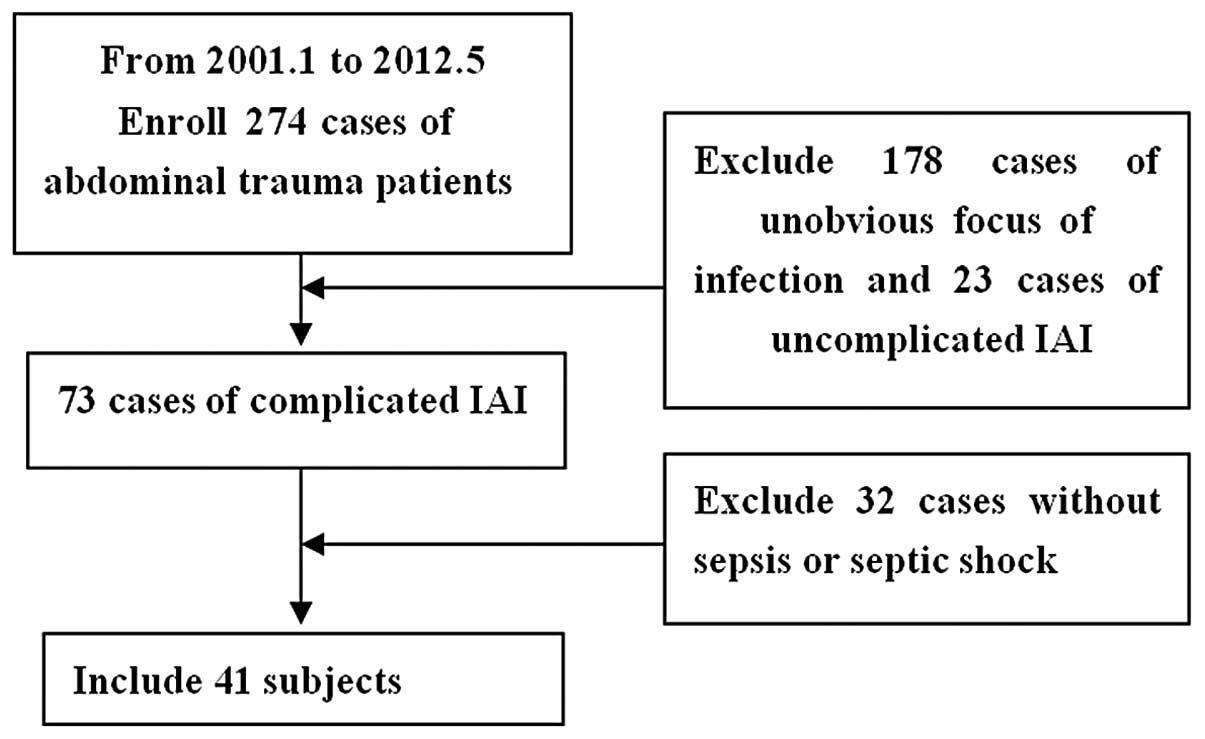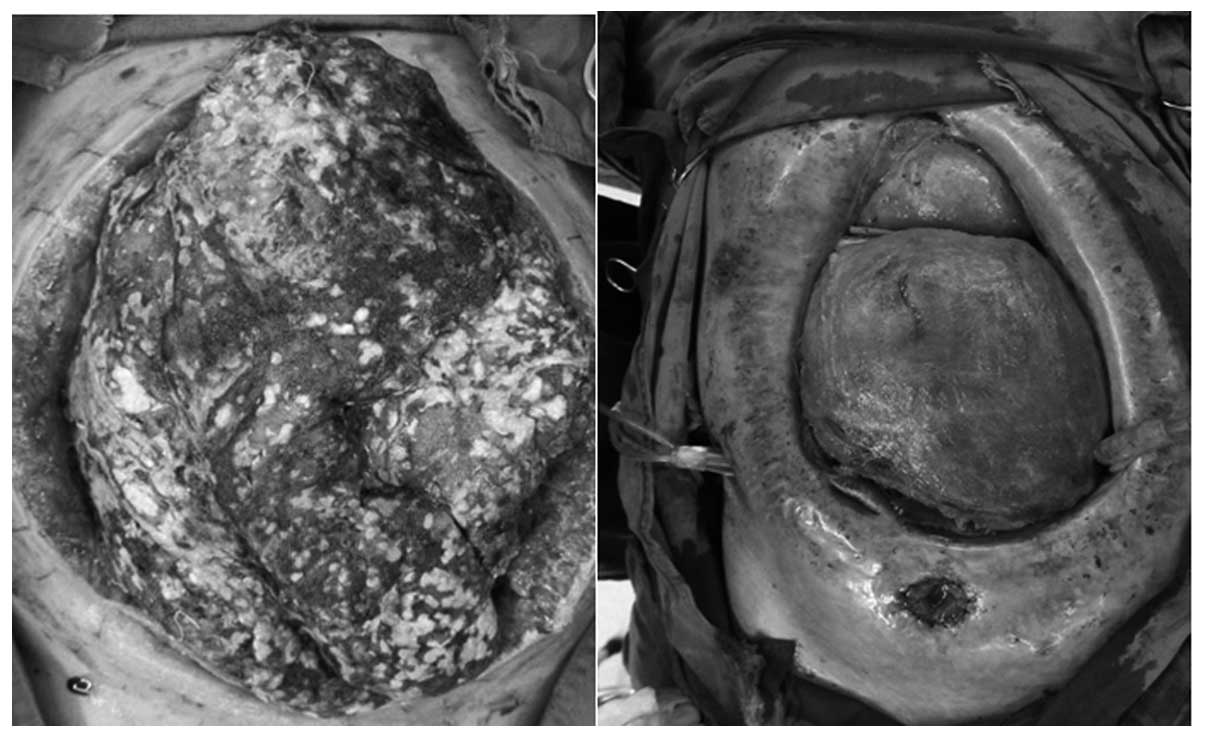Bacteriology and drug susceptibility analysis of pus from patients with severe intra‑abdominal infection induced by abdominal trauma
- Authors:
- Published online on: March 6, 2014 https://doi.org/10.3892/etm.2014.1609
- Pages: 1427-1431
Metrics:
Total
Views: 0 (Spandidos Publications: | PMC Statistics:
)
Total PDF Downloads: 0 (Spandidos Publications: | PMC Statistics:
)
Abstract
The aim of the present study was to retrospectively analyze the bacteriology and drug susceptibility of pus flora from abdominal trauma patients with severe intra‑abdominal infection (SIAI). A total of 41 patients with SIAI induced by abdominal trauma were enrolled in the study, from which 123 abdominal pus samples were obtained. The results from laboratory microbiology and drug sensitivity were subjected to susceptibility analysis using WHONET software. A total of 297 strains were isolated in which Gram‑negative bacteria, Gram‑positive bacteria and fungi accounted for 53.5 (159/297), 44.1 (131/297) and 0.7% (2/297), respectively. Anaerobic bacteria accounted for 1.7%. The five predominant bacteria were Escherichia coli (E. coli), Staphylococcus aureus (S. aureus), Klebsiella pneumoniae (K. pneumoniae), Enterococcus faecalis and Pseudomonas aeruginosa (P. aeruginosa). E. coli was highly susceptible to cefoperazone (91%) and imipenem (98%), while Gram‑positive cocci were highly susceptible to teicoplanin (100%) and linezolid (100%). S. aureus was 100% susceptible to vancomycin and K. pneumoniae was highly susceptible to imipenem (100%) and amikacin (79%). P. aeruginosa was the most susceptible to ciprofloxacin (90%). Gram‑negative bacterial infection was present in the majority of cases of SIAI. However, a large number of patients were infected by Gram‑positive bacteria, particularly S. aureus that exhibited significant resistance to penicillin (100%), oxacillin (100%) and a third‑generation cephalosporin antibiotic cefotaxime (95%). Amongst the pathogenic bacteria that cause SIAI, both Gram-negative and Gram-positive bacteria account for a high proportion, so high‑level and broad-spectrum antibiotics should be initially used.












